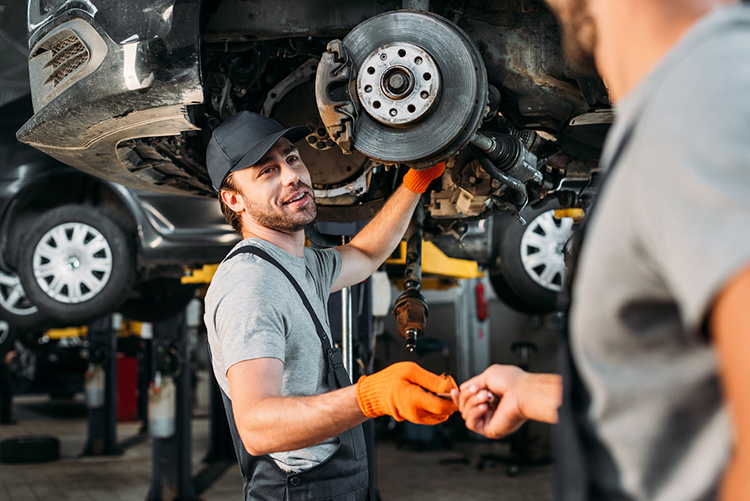Safety guide for automotive mechanic workshops

This safety guide is for automotive mechanic workshops and encourage Occupational Health and Safety (OHS). Ultimately, it gives an overview of the different hazards to be aware of when working in a mechanic’s workshop, as well as appropriate safety procedures to implement.
In 2014–15, automotive electricians and mechanics made 1,760 serious workers’ compensation claims, involving at least one week away from work. The median work time lost was four working weeks and the median compensation paid was $10,300, according to SafeWork Australia.
With safety risks in an automotive workshop covering many different areas, there is a lot of scope for things to go wrong if appropriate safety measures aren’t taken. This include hazardous manual tasks, machinery and equipment, slips, trips and falls, confined spaces, traffic management and hazardous substances.
Manual tasks:
Musculoskeletal injuries are the most common and costly workplace injury. Any task that is performed with high, sudden, repeated or sustained force can place stress on the body.
A car mechanic will often be bending, stretching or reaching, lifting or moving equipment and materials, and working in awkward positions, such as under car bonnets. In particular, this can occur when wheel and tyre fitting, or when working inside vehicle cabins and under vehicles.
Using mechanical aids, devices or equipment, such as hoists, cranes and underslides, can reduce the need for heavy lifting, awkward postures and body stressing. Other control measures include modifying workplace layouts, workloads, work patterns and rotations, and providing adequate training for workers in heavy lifting and other hazardous manual tasks.
Due to being unconditioned for work, Young and new workers, in particular, are at a greater risk of lifelong injuries. Pre-employment testing and appropriate training to job mitigate the likelihood.
Machinery and equipment, including noise:
Machinery, power tools and hand tools, as well as anything with moving parts, pose a safety risk.
Regularly servicing and maintaining equipment, conducting risk assessments, and following appropriate safety and operation procedures, including adequately guarding machinery prevent hazard.
Tight clothing should be worn and jewellery removed to prevent catching. Other appropriate personal protective equipment (PPE) include safety glasses or goggles, steel-capped boots and protective gloves.
Angle grinders, compressors and compressed gases, electrical equipment, vehicle hoists, jacks, ramps and stands, and welding; these are also usually present in the workshop of an auto mechanic and require specific safety procedures to be in place.
Noise is also a big concern when working with engines, machinery and power tools—a certainty in any workshop. Even moderate levels of noise can cause permanent hearing loss.
A workplace noise assessment can help to identify noise hazards so workers avoid ear injuries. Choosing the right hearing PPE for workers is also essential as a last line of defence.
Slips, trips and falls:
Injuries caused by slips, trips and falls are one of the top five most common workplace injuries.
Ladders are a particular source of danger and appropriate safety procedures should be followed when using them.
Service pits, falling objects, and poorly maintained, uneven, slippery or unstable walkways, floors, stairs and landings can lead to slips, trips and falls. Store equipment, boxes, materials and tools properly so as not to present a trip hazard.
Confined spaces:
Working in confined spaces, such as service pits, present hazards around air quality, fire dangers, crushing and trapping, and noise levels. Appropriate safety controls should be in place to mitigate these risks, including never working alone, good ventilation and respirators.
Traffic management:
Any moving vehicles in a worksite, including cars, trucks and forklifts, present a hazard. Automotive mechanic workshops should have a traffic management plan in place to reduce the risk of injuries occurring.
Hazardous substances and chemicals:
Many hazardous substances and chemicals are present in a workshop of car mechanic service. This includes vehicle emissions, paint fumes and welding fumes. One can also find asbestos, batteries, lead, solvents, petrol and gas cylinders, dust and powders.
Safety procedures should address the health risks associated with each hazardous substance, as well as issues around the correct storage of dangerous goods to prevent fires and explosions. Matching PPE to the hazard, such as choosing gloves with the right coating, is vital.








































































